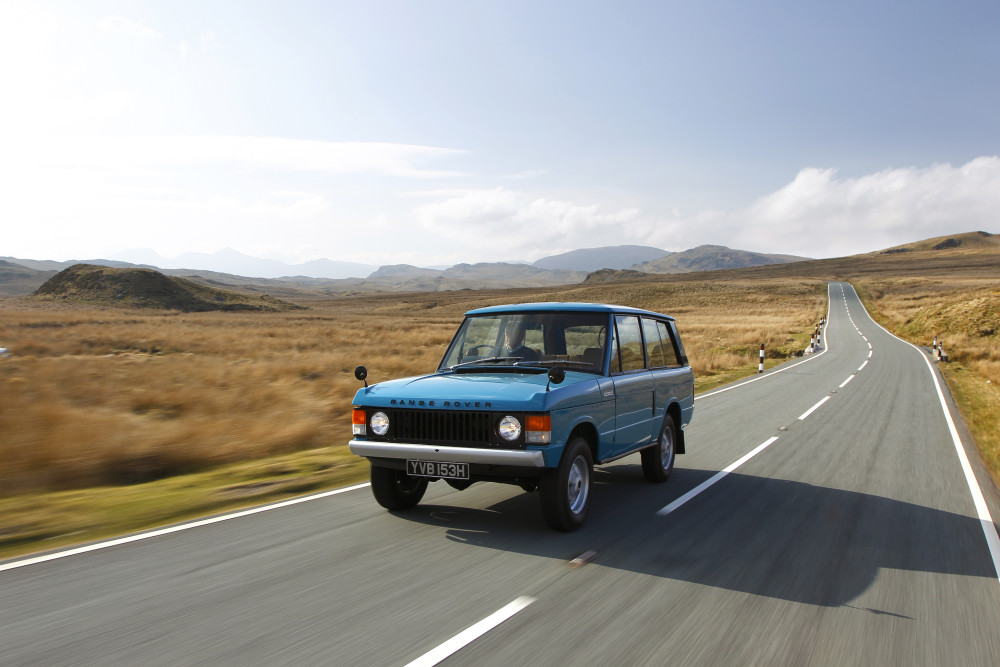Today marks 50 years since the first Range Rover was revealed, but the story goes back even further. During the mid 1960s, in a bid to revolutionise the growing 4×4 leisure market, the Rover car company’s engineering chief for new vehicle projects, Charles Spencer ‘Spen’ King (nephew of the founders of Land Rover), hatched a plan to combine the comfort and on-road ability of a Rover saloon with the off-road cability of a Land Rover.
Development of the first 100-inch station wagon prototype began during the late 1960s, with the first model being released to the world’s media to critical acclaim in 1970. Its blend of ability – motorway cruising, off-roading, and even towing in style and comfort – ensured its instant popularity. The original Classic model was cited as an ‘exemplary work of industrial design’ when it became the first vehicle to be displayed at the world famous Louvre Museum in Paris in 1971.
The first generation Range Rover (1970-1996) was originally only available as a two door when it went on sale in 1970. During its 26 year lifespan the Classic continued to evolve with the introduction of the four-door model in 1981 and an automatic gearbox in 1982. The first diesel Range Rover arrived in 1986.
The second generation Range Rover known as the P38A arrived in 1994 and was instantly recognisable thanks to its familiar silhouette, floating roof, clamshell bonnet, practical split tailgate and continuous waistline; all of which continue to this day. The vehicle also displayed an even more luxurious interior without compromising on its on-road ability and off-road capability. It also featured enhanced height-adjustable suspension as well as a 2.5-litre diesel and 3.9 and 4.6-litre versions of the V8 petrol, providing greater performance than ever before.
The third generation Range Rover (2001-2012) delivered a wealth of improvements on all predecessors during its 11 year period. Engineering innovations included a stiffer monocoque body (replacing the traditional 4×4 ladder frame) and fully independent suspension with interconnected air springs (at the time nearly all 4x4s had rigid axles). The interiors of these vehicles were inspired by high-end yachts, fine furniture and first class airline seats, providing more space and luxury.
In 2012, the fourth generation and most recent Range Rover debuted. It was the first SUV to feature lightweight all-aluminium construction, saving 420kg in weight compared to its predecessor. Featuring a wealth of new off-road innovations such as automatic Terrain Response™ 2 and All-Terrain Progress Control, it has evolved to include efficient new electrified Ingenium engines, a plug-in hybrid electric version and innovative infotainment and safety technologies.
For the last five years the Range Rover SVAutobiography has been at the pinnacle of the model line-up, with the most powerful and refined vehicles in Range Rover’s history. Produced by Land Rover’s Special Vehicle Operations division, customers can also choose from the Range Rover SVAutobiography and SVAutobiography Dynamic – which feature powerful V8 engines and finely crafted cabins.








